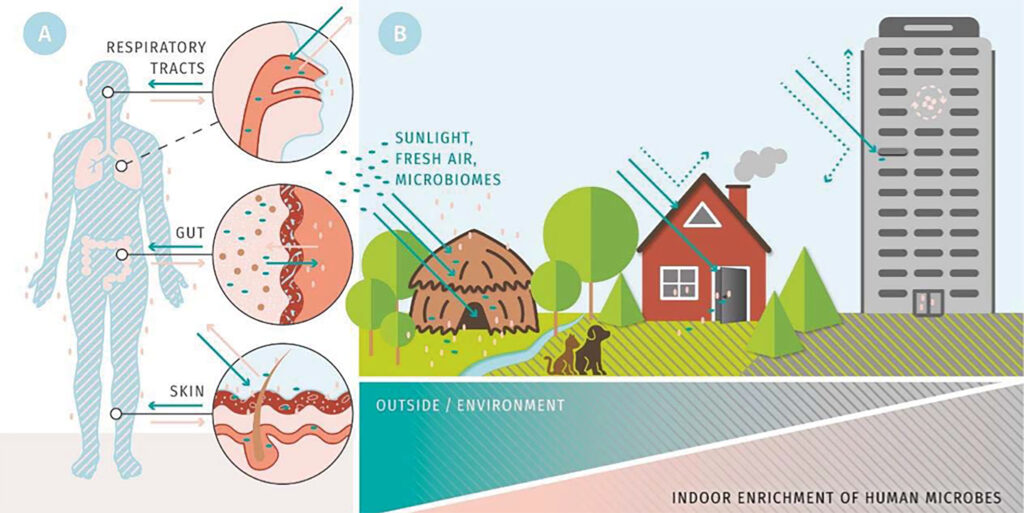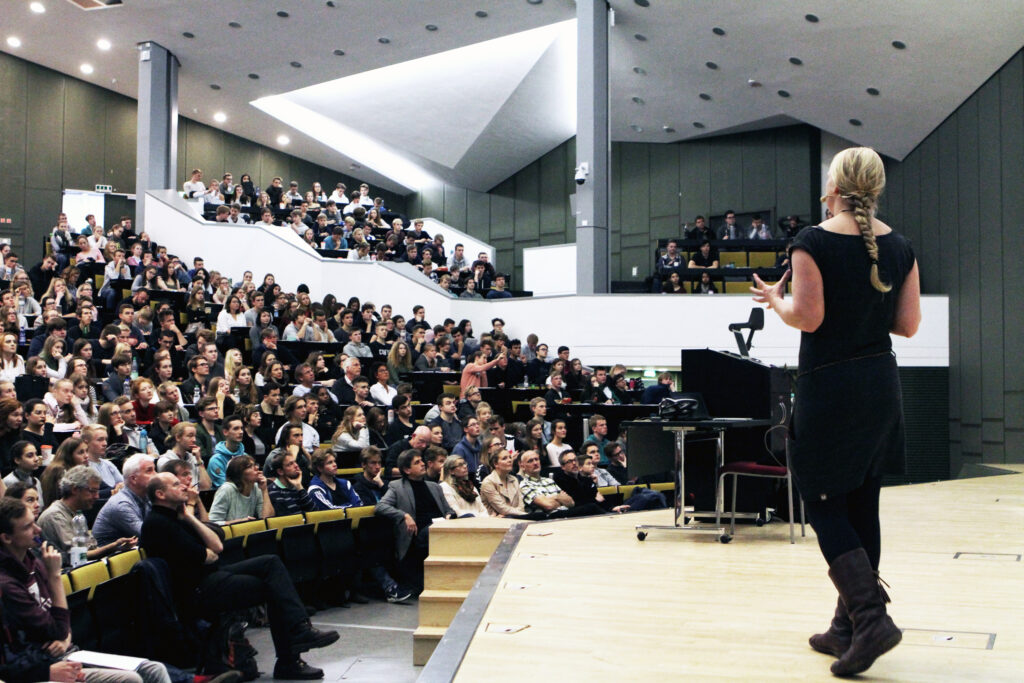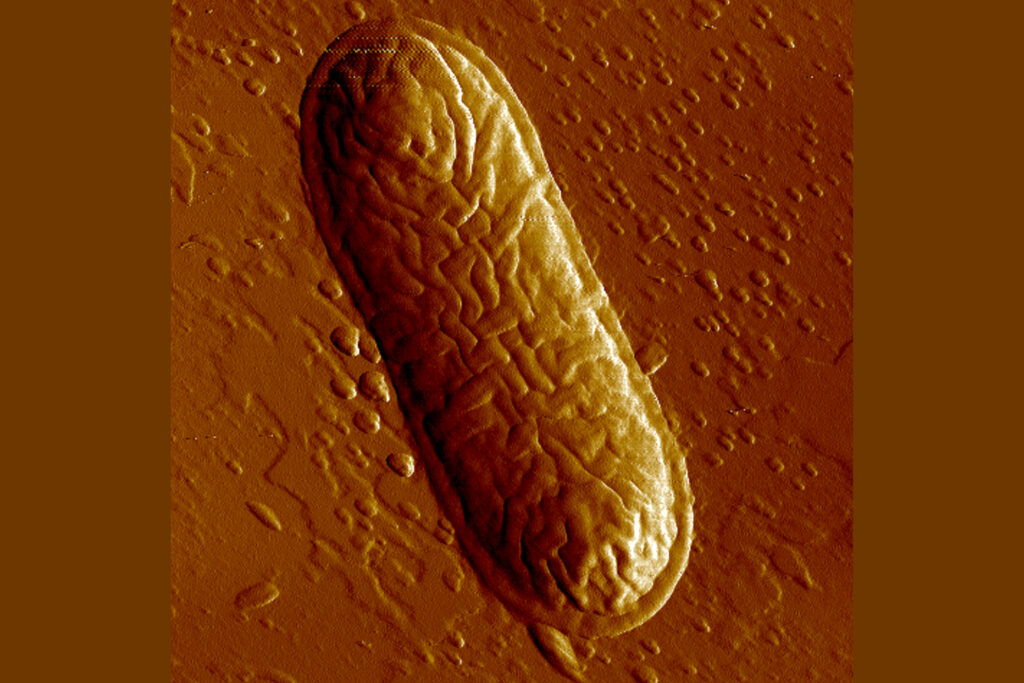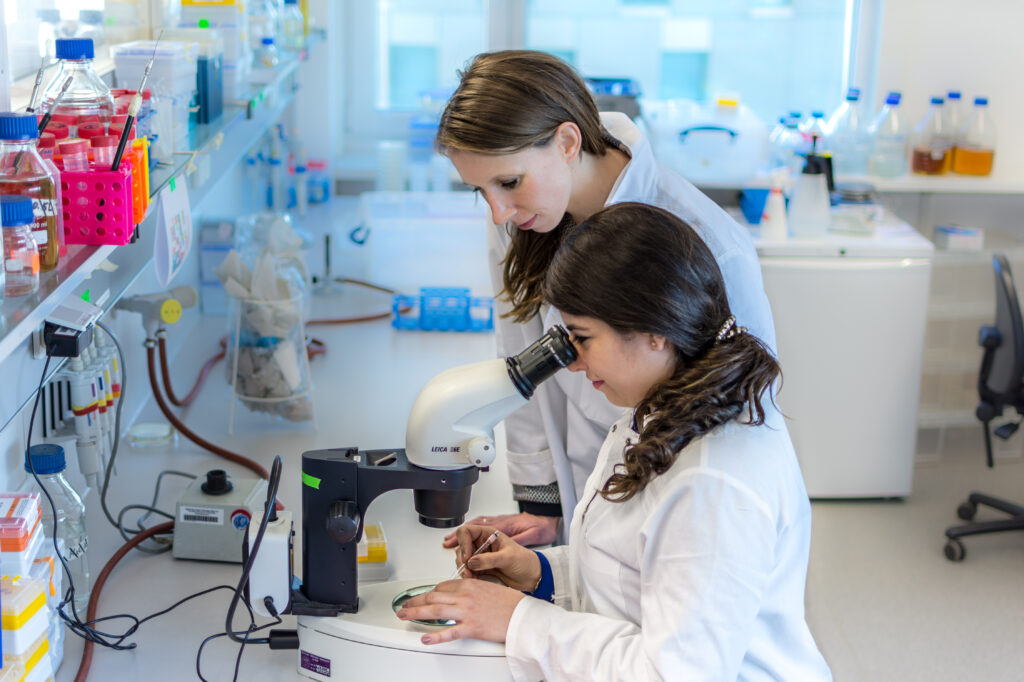How buildings influence the microbiome and thus human health
Renowned international researchers, led by Kiel Life Science Spokesperson Professor Thomas Bosch from Kiel University, describe a completely new dimension of microbiome research and point to the previously little-studied effects of modern buildings on microbial colonisation.
Over the last 20 years, the life sciences have come to realise that all living beings – from the simplest animal and plant organisms to humans – live in close association with a multitude of microorganisms. Together with the multicellular host organism, these symbiotic bacteria, viruses and fungi, which colonise on and in their tissues and form the so-called microbiome, constitute a primarily beneficial community in the form of a metaorganism. Many life processes, including the health and disease of the organism as a whole, can only be understood in the context of this functional co-operation between the host organism and microorganisms, for example in the absorption of nutrients, immune function or neuronal processes. In recent decades, however, the lifestyle in industrialised societies has led to a gradual depletion of diversity of the human microbiome and this has contributed to the development of so-called environmental diseases, for example inflammatory bowel diseases, type 2 diabetes or neurodegenerative disorders. At Kiel University, host-microbe interactions and their effects on health and disease are being investigated in detail in the Collaborative Research Center (CRC) 1182 “Origin and Function of Metaorganisms”.
A group of internationally renowned scientists involved in the “Humans and the Microbiome” research programme at the Canadian Institute for Advanced Research (CIFAR) in Toronto have now published a perspective paper proposing a new dimension for the study of the human microbiome and a paradigm shift in urban and building planning: In it, they discuss the influence of the so-called built environment on the composition and diversity of the microbiome. They put forward the hypothesis that modern buildings have a significant influence on human microbial colonisation, depending on their nature and degree of shielding from the environment, and that this aspect should be taken into account in future architecture in terms of healthy and microbiome-friendly building conditions. The researchers, including Professor Beatriz Colomina from Columbia University, Professor Brendan Bohannan from the University of Oregon, Professor Margaret McFall-Ngai from the California Institute of Technology and CRC 1182 board member and Kiel Life Science Spokesperson Professor Thomas Bosch from Kiel University, published their work on the effects of the built environment on human health today in the scientific journal Proceedings of the National Academy of Sciences (PNAS).
Buildings interrupt contact with microorganisms from the environment
The human quest for shelter and protection from the elements is as old as mankind itself, for thousands of years people all over the world have been creating and developing a wide variety of dwellings right up to the architecture of today; in the near future more than two thirds of the world’s population will live in cities. Overall, the urban lifestyle, in combination with many other factors, has ensured that life expectancy and quality of life have improved significantly for the majority of humanity.
“However, buildings as such and the triumph of urban living have also produced negative effects by shielding people to a greater or lesser extent from contact with their microbial environment. The extent of these presumably unfavourable consequences for the composition and diversity of the human microbiome can hardly be estimated as yet,” explains CIFAR Fellow Bosch.
The researchers see the main reason for this in the fact that our modern life in built environments increasingly prevents contact with the multitude of microbes in the natural environment. In addition, buildings themselves must be viewed as complex organic systems in the sense of countless interdependent microbial communities, which also have an impact on the human metaorganism.
Taken together, this has negative consequences, for example by creating new niches for disease hosts and vectors in buildings, concentrating waste and toxic substances or reducing ventilation and the entry of sunlight. All of this in turn influences the human microbiome in a variety of ways: For example, the built environment creates novel reservoirs of harmful microbes adapted to humans, reduces the exposure of individuals to beneficial microbes, or alters human behaviour to inhibit natural and beneficial transmission of microorganisms between people. “If human health is defined as being dependent on a large diversity of the microbiome, then a large proportion of today’s buildings must be considered as not conducive to health in terms of construction and design, materials or type of use – because in sum, their effects appear to reduce microbial diversity, which could lead to poorer overall health of the occupants,” emphasises Bosch.
Future architecture should restore permeability for microorganisms
Since their invention, buildings have often unintentionally caused health problems, even though people have always tried to make them healthier and safer. The study of the links between architecture and health is therefore by no means new, and a crucial question today is: how can buildings be designed for better health and constructed in such a way that a complex and diverse microbiome can survive? “By looking at the impact of building characteristics on the human microbiome, we are adding a whole new and important dimension to this complex. Our urban way of life ignores the fact that the body has adapted to its environment and its microbes over thousands of years and that it is only fit and healthy in contact with these partner organisms. Only if we accept this multi-organismic complexity will we arrive at a deep understanding of health and thus an understanding of common diseases. The thoroughly revolutionary view of living organisms and microbes as a functional unit will also shift the boundaries of urban planning in the future. We offer innovative scientific and applied perspectives for the development of a future, microbiome-friendly architecture that will once again allow natural and healthy human contact with microorganisms in the built environment,” says Bosch.
The prerequisite for this is that in future, buildings are developed with the additional purpose of dosed and controlled exposure of people to microorganisms in particular – and no longer see them exclusively as a barrier to ward off environmental influences, as was previously the case. According to the researchers, one aim could therefore be to plan and construct the built environment in future in such a way that the focus is not on complete isolation from the natural, microbial environment. On the contrary: buildings can be opened up to nature again and made more nature-friendly. This can be achieved, for example, by using less toxic building materials and creating an overall greater structural permeability to external, particularly microbial, influences. “With this perspective, we are fundamentally expanding our view of the human microbiome and establishing a direct link to the built environment through to modern urban planning. This results in fascinating new approaches that deal with microbiome-friendly architecture and construction and may in future be reflected in a significantly improved built environment that will be beneficial to human health,” summarises Bosch.
Original publication:
Thomas C.G. Bosch, Mark Wigley, Beatriz Colomina, Brendan Bohannan, Forrest Meggers, Katherine R. Amato Meghan B. Azad , Martin J. Blaser, Kate Brown, Maria Gloria Dominguez-Bello, Stanislav Dusko Ehrlich, Eran Elinav, B. Brett Finlay, Kate Geddie, Naama Geva-Zatorsky, Tamara Giles-Vernick, Philippe Gros, Karen Guillemin, Louis-Patrick Haraoui, Elizabeth Johnson, Frédéric Keck, Jamie Lorimer, Margaret J. McFall-Ngai, Mark Nichter, Sven Petterson, Hendrik Poinar, Tobias Rees, Carolina Tropini, Eduardo A. Undurraga, Liping Zhao, Melissa K. Melby (2024): The potential importance of the built-environment microbiome and its impact on human health. Proceedings of the National Academy of Sciences (PNAS)
First published: 25. April 2024 DOI: 10.1073/pnas.2313971121
Images are available for download:
www.uni-kiel.de/de/pressemitteilungen/2024/063-bosch-pnas-graphics.jpg
Caption: Certain features of modern buildings seem to cause more or less pronounced disadvantages for health, as they prevent contact with the multitude of microbes in the natural environment and in total seem to have negative effects on microbial diversity.
© Katja Duwe-Schrinner
www.uni-kiel.de/de/pressemitteilungen/News/bosch-buchvero__ffentlichnug-autor.jpg
Caption: Professor Thomas Bosch from Kiel University, together with international colleagues, proposes that the influence of building characteristics on the composition and diversity of the microbiome should be given greater consideration in future.
© Enver Hirsch
Contact:
Prof. Thomas Bosch,
Spokesperson Priority Research Area
„Kiel Life Science“ (KLS), Kiel University
Phone: +49 (0) 431-880-4170
Email: tbosch@zoologie.uni-kiel.de
More information:
Cell and Developmental Biology (AG Bosch), Zoological Institute, Kiel University:
www.bosch.zoologie.uni-kiel.de
Priority Research Area “Kiel Life Science” (KLS), Kiel University:
www.kls.uni-kiel.de
Research program „Humans & the Microbiome“,
Canadian Institute for Advanced Research (CIFAR):
www.cifar.ca/research/program/humans-the-microbiome





